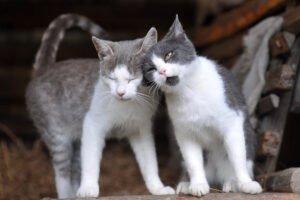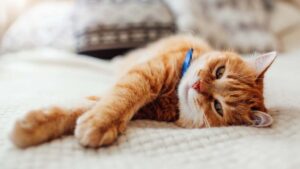Mother Cats Sitting on their Kittens: What you need to Know
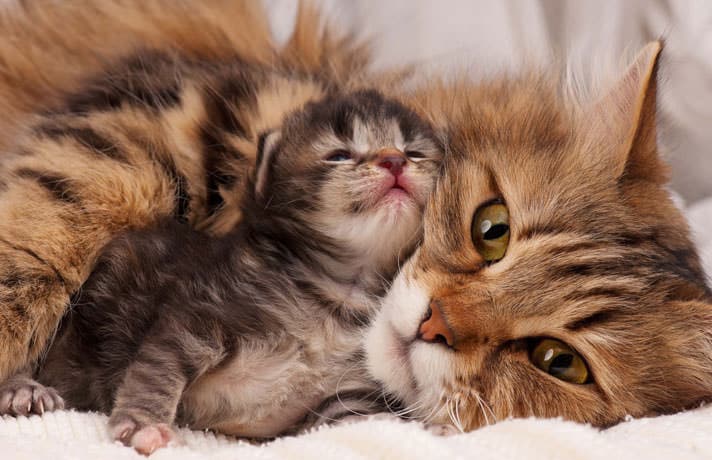
Do you want to know why Mother Cats can be found sitting on their kittens?
It’s a common sight to see mother cats sitting on their kittens, keeping them warm and protected. While this behavior may seem sweet, it can also pose some serious dangers to the kittens. As a responsible pet owner, it’s important to monitor mother cats and their kittens to ensure their safety and well-being.
Is it normal for a Mother Cat to sit on her Kitten(s)?
It is not uncommon for mother cats to sit on their kittens, and in many cases, it can be considered normal behavior. However, the reason behind it varies depending on the situation.
Sometimes, a mother cat intentionally sits on her kittens as a way to keep them warm and safe. This behavior is instinctive and serves as a way to protect the kittens from potential dangers such as predators or cold temperatures. The mother cat may also use her body heat to regulate the temperature of her kittens, helping them to maintain their body temperature.
However, there are also situations where a mother cat may accidentally sit on her kittens due to inexperience or constraints. For example, if the mother cat is trying to move around in a small space or if she is anxious or stressed, she may accidentally sit on or squash her kittens.
To answer the question, it is more-or-less normal for mother cats to sit on their kittens. However, it is important to monitor the situation and ensure that the kittens are safe. (In case the mother is doing it accidentally). This is especially important for the first 3 weeks of a kitten’s life, as they are weak and delicate.
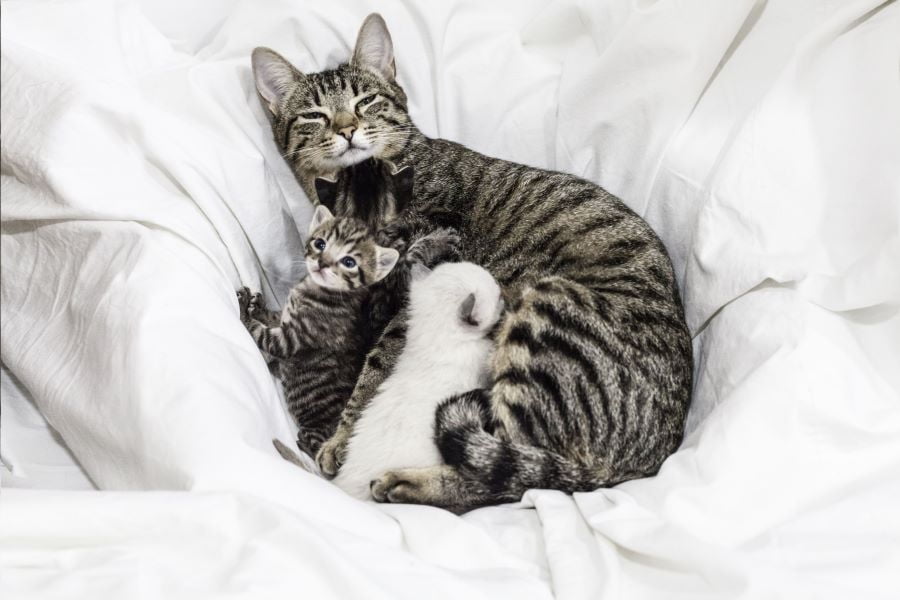
Why do Mother Cats sit on their Kittens?
While mother cats sitting on their kittens is a natural and instinctual behavior, there are several underlying-reasons why they do it. Here are some of the most common reasons:
- To regulate body temperature: Newborn kittens cannot regulate their body temperature on their own and rely on their mother’s body heat to keep warm. By sitting on her kittens, the mother cat is able to provide them with the warmth they need to survive. This is especially important during the first few weeks of life when kittens are most vulnerable to cold temperatures.
- To protect her kittens: Mother cats are protective of their young and will do everything in their power to keep them safe. Sitting on their kittens is a way for the mother cat to create a barrier between her babies and any potential threats. This includes other animals, humans, and even the elements.
- To bond with her kittens: Bonding is an essential part of the mother-kitten relationship. By sitting on her kittens, the mother cat is able to form a deeper bond with her babies. This helps to establish trust and creates a sense of security for the kittens. However, for bonding purposes, lying alongside them or cuddling them is more than enough. The mother may simply be inexperienced, and may not the consequences of her actions, and how delicate the kittens are.
- Limited Space: Mother cats may sit on their kittens due to limited space. This usually happens in small enclosures or areas where there are too many kittens for the mother cat to take care of properly. In such situations, the mother cat may sit on her kittens to prevent them from wandering off or getting lost. However, this can lead to accidental suffocation or crushing of the kittens, which can be fatal.
- Lack of Experience: First-time mother cats may also sit on their kittens excessively due to lack of experience. They may not know how to properly care for their kittens or recognize signs of distress. Some cats just lack maternal instincts, and are bad mothers by nature. The type of cat breed the mother is, also plays a role in determining the strength of her maternal feelings.
- Accidental Sitting: Sometimes, the mother cat may accidentally sit on a kitten while trying to lay down or while making herself comfortable. This can be particularly dangerous for newborn kittens, who are delicate and vulnerable to injury. Newborn kittens also cannot meow or struggle that well, so the mother may never even notice.
- To establish dominance: In some cases, mother cats may sit on their kittens as a way to establish dominance. This is more common in feral cats, as a way for the mother to assert her authority over her kittens. It is also rather unlikely for this to happen with newborns, rather you might expect this with older kittens.
Dangers of Mother Cats sitting on Kittens
It may seem obvious, but it’s important to highlight the potential dangers of mother cats sitting on their kittens. While it’s a natural behavior, it can also pose risks to the health and safety of the kittens. Here are some of the dangers to watch out for:
- Accidental suffocation: Mother cats who are too heavy or sit on their kittens for too long can inadvertently cause them to suffocate or become overheated. This is especially concerning for newborn kittens who are more fragile and vulnerable. It’s important to monitor the mother cat’s behavior and ensure that she’s not sitting on the kittens for extended periods.
- Risk of injury: Mother cats may accidentally step on or injure their kittens while moving around or adjusting their position. This can cause serious injuries or even death to the kittens. It’s crucial to keep an eye on the mother cat, and ensure that the kittens are not in harm’s way.
- Reduced milk supply: If the mother cat is constantly sitting on her kittens, they won’t be able to nurse properly. This can lead to a reduced milk supply and malnourishment in the kittens, which can have long-term health effects. It’s important to ensure that the mother cat has access to food and water, and that she’s not being overly protective of her kittens to the point of neglecting their nutritional needs.
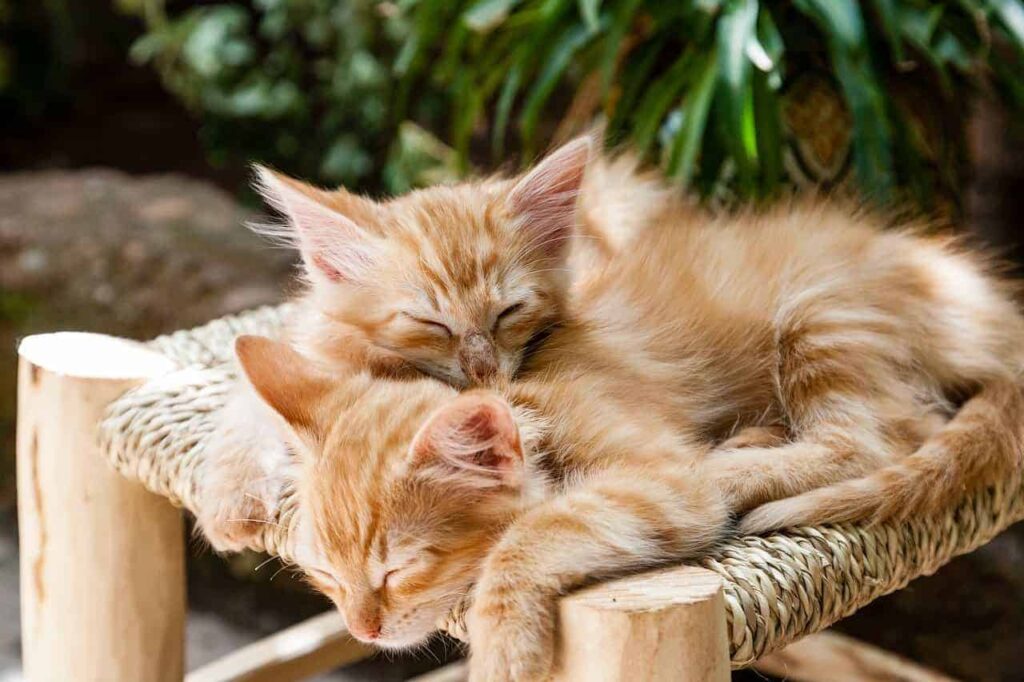
How to prevent these dangers
As a responsible pet owner, it’s important to take measures to prevent the dangers that can arise when mother cats sit on their kittens. Here are five ways to prevent these dangers:
- Provide a warm and safe environment: It’s important to provide a warm and safe environment for the mother cat and her kittens. This includes a cozy nest with plenty of blankets or bedding to keep the kittens warm. It’s also important to ensure that the area is free of potential hazards that could harm the kittens.
- Monitor the mother and kittens: Keeping a watchful eye on the mother and her kittens can help prevent accidental suffocation or injury. This means checking on them regularly and ensuring that the mother cat is not sitting on her kittens excessively.
- Create more space: If the mother cat is sitting on her kittens due to limited space, it’s important to create more space for them. This can be done by providing a larger enclosure or separating the kittens into smaller groups to reduce the number of kittens the mother has to care for at one time.
- Offer assistance: If the mother cat is inexperienced or lacks maternal instincts, it may be necessary to offer assistance. This can include helping to clean the kittens or providing supplemental feedings if necessary.
- Provide distractions: In some cases, providing the mother cat with distractions such as toys or treats can help prevent her from sitting on her kittens excessively. This can help redirect her attention and prevent accidents from occurring. You can also consider using things like a “Feliway Spray” which can help the mama cat relax.
Conclusion
In conclusion, mother cats sitting on their kittens is a natural and instinctual behavior that serves several purposes. This includes regulating body temperature, protecting the kittens, bonding with them, and establishing dominance. However, this behavior can also pose potential dangers to the kittens, such as accidental suffocation, injury, and reduced milk supply.
As responsible pet owners, it is important to provide a warm and safe environment for the mother cat and her kittens, monitor their behavior, create more space if necessary, and offer assistance or distractions to prevent accidents from occurring. By taking these steps, we can ensure the safety and well-being of our feline friends.
